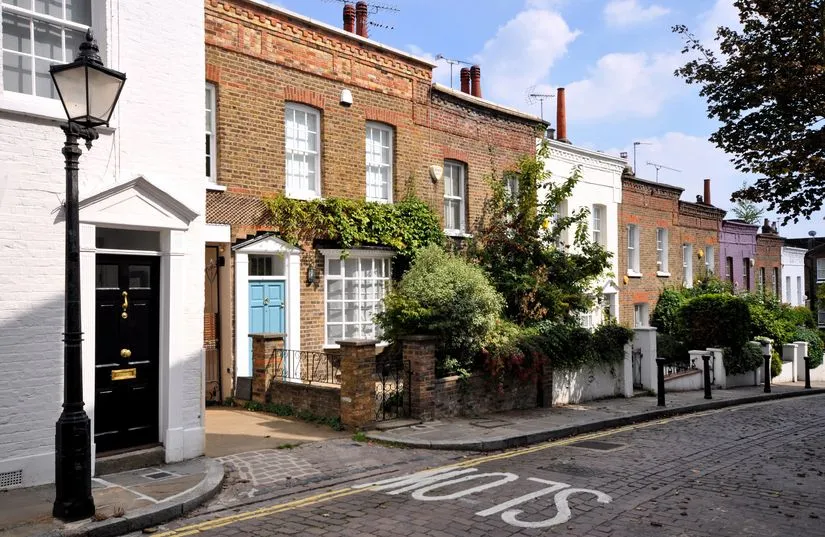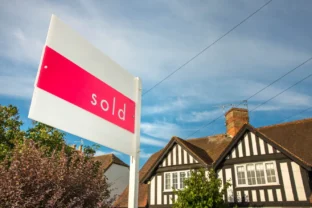Understanding The Different Types of Mortgages
29 February 2024 • 7 min read

Choosing the right mortgage can feel like a lot of pressure, especially when there are so many options on the market. From interest-only to repayment and fixed rate to standard variable rates, it is essential that you choose the right mortgage for you; otherwise, it could cost you thousands.
Figuring out the right type of mortgage that suits you and your circumstances can help refine your choices when choosing the right lender and mortgage product. This article will help you to better understand the different types of mortgages and their pros and cons.
This article is not intended as financial advice and should not be used as a substitute for a financial advisor. You should discuss your personal circumstances with a mortgage advisor before choosing your mortgage.
What Is an Interest-Only or Repayment Mortgage?
An interest-only mortgage is when you pay back the interest, and at the end of the term, you pay back the equity of the house. In contrast, a repayment mortgage is when you pay back both the interest and the equity each month.
A repayment mortgage is the most popular and appropriate choice as they ensure you are paying off your debt and that you will have repaid the mortgage by the end of the term.
Fixed-rate Mortgages
Interest rates are dictated by the Bank of England, which bases its rates on a range of global and domestic economic circumstances. The base rate can change quite rapidly based on these factors.
Fixed-rate mortgages are a price freeze where the interest rate is guaranteed. Monthly payments stay the same for a set number of years, ranging from two or three years to five years and up to ten or longer in some cases. After this period, it reverts to the lender’s standard variable rate (more on that later).
A five-year fixed rate appeals to those who are financially stable but want to minimise any financial risks. However, this could result in feelings of being trapped in a longer term, especially if your circumstances change.
Most people tend to opt for a two or three-year term for these reasons. At the end of the term, you can always remortgage and move on to another fixed deal.
Fixed-rate mortgages are a popular option for many due to the peace of mind they can provide, with mortgage repayers knowing exactly how much you will be paying each month. You are also protected from any increases in interest rates during your fixed rate period.
On the flip side, if the interest rates fall, you won’t benefit and could be trapped in a higher-rate mortgage. Plus, fixed-rate mortgages usually come with early redemption fees meaning you may face some difficulties if you ever want to remortgage before your term expires.
What is a Variable Rate Mortgage?
The interest rate of variable-rate mortgages is not fixed and, therefore, can go up or down each month. The interest rate will be the lender’s Standard Variable Rate (SVR) which is influenced by the Bank of England base rate.
There are several different types of variable-rate mortgages:
- Your lender’s standard variable rate (SVR)
- Discount Mortgages
- Tracker mortgages
- Capped rate mortgages
Lender’s Standard Variable Rate
Each mortgage lender will have a standard variable rate (SVR) which they can change at any point. However, most changes are usually in line with the Bank of England base rate changes.
Most people end up on a lender’s SVR because their fixed-rate or other mortgage deal has come to an end. In most cases, the SVR will be more than you were paying on the fixed rate, and your payments will increase.
Discount Mortgages
Lenders drop their rates temporarily to attract you to their more expensive SVR; this is a discounted mortgage. The discounted rate, which for example, could be the lender’s SVR minus 1%, will be offered for a period that usually lasts between two and five years. After this period, you’ll be back on their more expensive mortgage.
Discounted mortgages are intended as a good option for those struggling with the initial high costs of being a homeowner. However, it is important to consider how this type of mortgage would work for you in the long run. You must consider your finances in the long run and whether you can afford the increased payments once the discounted introductory period ends. Another factor is whether you can remortgage and if this would be possible after the discounted period.
A downside to this type of mortgage is that the lender can change their SVR at any point, meaning your repayments can change monthly.
Tracker Mortgages
A tracker mortgage tracks the Bank of England base rate, set by the Bank of England’s Monetary Policy Committee each month, to which an interest rate is added. So, for example, the rate might be the base rate plus 1%. This means that if the base rate is 0.75%, you’ll pay 1.75%. Therefore, your mortgage payments could go up or down depending on whether the base rate is increased or decreased.
Capped Rate Mortgages
A capped-rate mortgage is a type of variable-rate mortgage; however, it has an interest cap rate, so your payments cannot go above a certain amount.
These capped rates tend to only last a certain amount of time until you are transferred onto the lender’s SVR. They’re also more expensive than other types of variable-rate mortgages.
What is an Offset Mortgage?
An offset mortgage is when your mortgage lender takes into account how much you have in a savings account with them and takes that off the debt on which they charge interest. For example, if you have £15,000 in savings and a £100,000 mortgage, you would only have to pay interest on £85,000.
A benefit of this type of mortgage is that you can be more flexible with your payments, so you can pay more when you have more money and pay less when you need a bit more to spend. A downside is that you won’t earn interest with the savings you have with the lender.
First-time Buyer Mortgages
To help people get on the property ladder, many mortgage lenders offer special deals for first-time buyers. These special offers usually consist of a lower deposit and lower application fees. The mortgages are also often discounted to ease the financial strain in the first few years; however, you may have to pay this back later.
The Help to Buy scheme was a popular option for many; however, the last date to apply for this was 31st October 2022. The government has decided not to extend or replace this scheme due to ‘95% mortgages’ being widely available. This is where buyers only need a 5% deposit and a mortgage for the remaining 95%. You can read more about Help to Buy alternatives here.
What is a Guarantor Mortgage?
This is when a relative acts as a guarantor and agrees to make the mortgage payments if you can’t. When you have a guarantor, you can usually borrow a more significant amount than you would be able to on your own.
What is a Green Mortgage?
These types of mortgages reward you for saving energy within your property. Some lenders will give you cashback, larger loans or lower interest rates if your home meets a minimum energy-efficiency level or if you make energy-efficient improvements. Lenders offering green mortgages include Natwest, Barclays, Nationwide, Saffron Building Society, and more.
Muve also works with Habito, a mortgage broker who can give advice and expert support to help people buy and finance their homes. So, to learn more about the different types of mortgages and which one is best for you, don’t hesitate to get in touch or get a free quote. Alternatively, you can visit Habito to speak to a finance expert and find out how to get the best mortgage.
You might also like
Your Stress-Free Journey Begins Here. Moving to a new house is an exciting adventure, ...
Boosting the value of your home Many homeowners are already aware that they can ...

